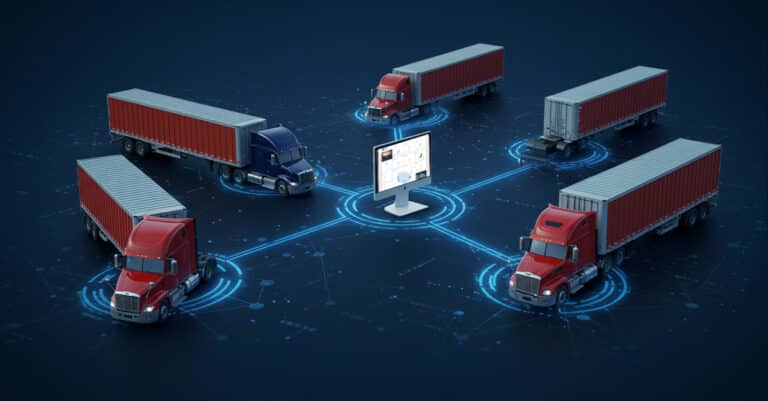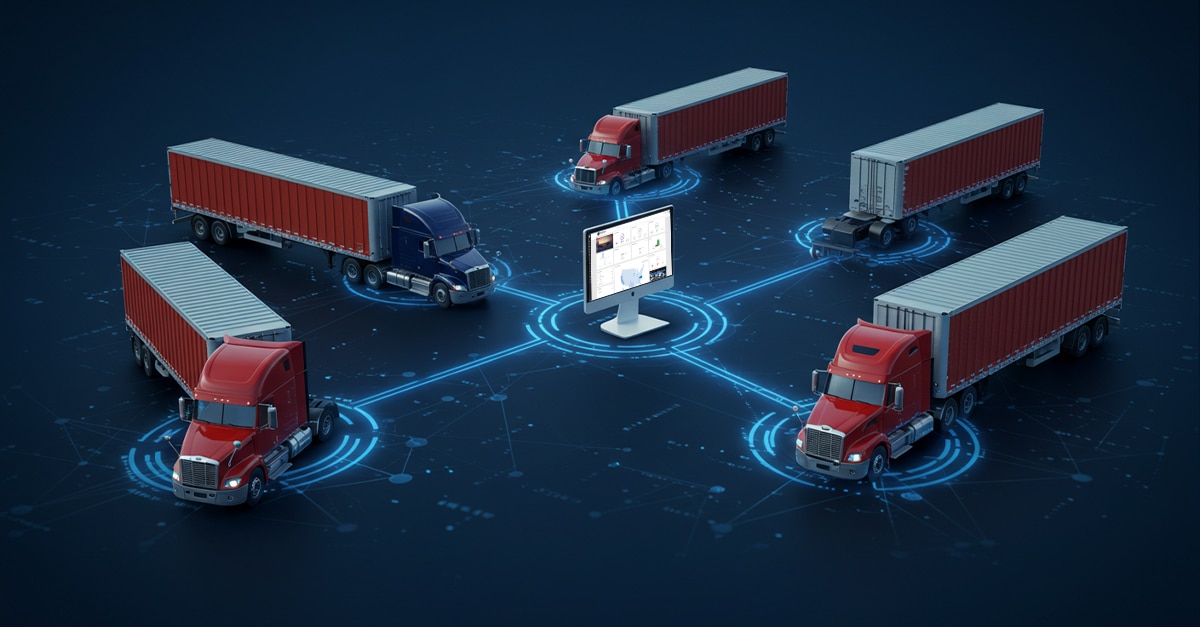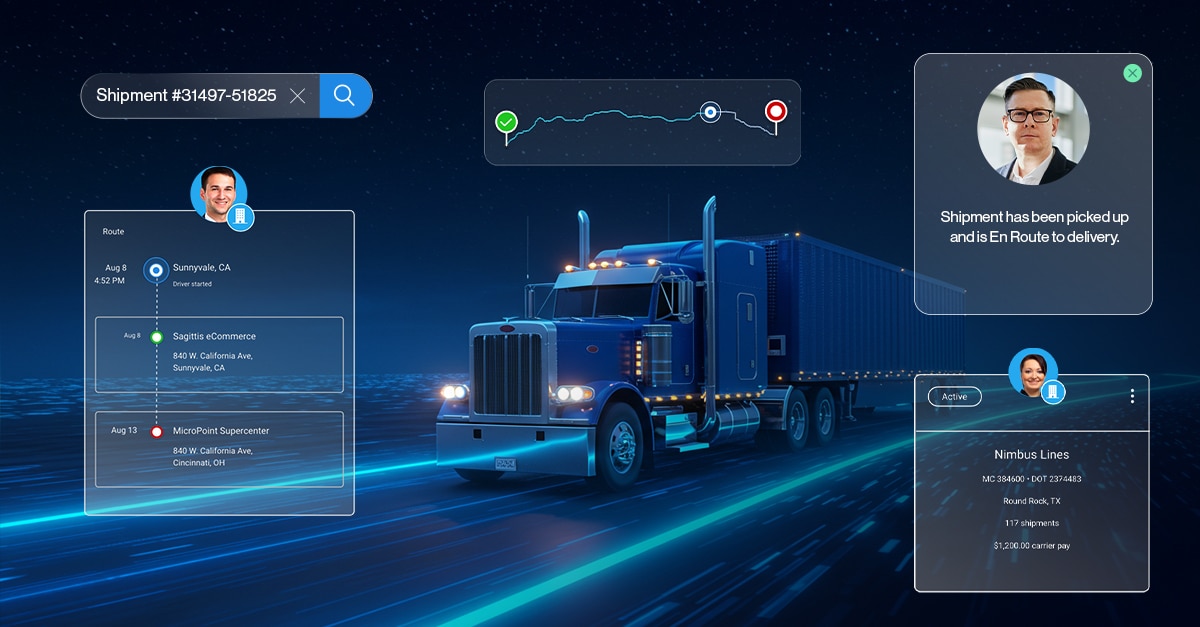Freight technology has tremendously impacted the logistics industry, enabling it to become more efficient, safer, and faster. From the advent of the first Warehouse Management System to the development of self-driving vehicles, technology has played a critical role in revolutionizing how we move goods and people worldwide.
TMS Drives Huge ROI
One of the staple technologies in logistics today is the Transportation Management System – or TMS. A Transportation Management System (TMS) is a software platform that helps companies manage and optimize their transportation operations. A TMS typically includes features such as carrier selection, shipment planning, routing, tendering, tracking, and freight audit and payment.
By leveraging a TMS, companies can improve visibility into their transportation activities, automate manual processes, and make more informed decisions about carrier selection and routing. This can result in cost savings, improved on-time delivery rates, and more efficient use of resources such as labor and fuel.
A TMS can be deployed as a standalone solution or integrated with other supply chain management systems, such as Warehouse Management Systems (WMS) or Enterprise Resource Planning (ERP) systems, to provide a more complete view of supply chain activities.
Overall, a TMS is a critical tool for companies that rely on transportation to move goods and materials and can help them improve efficiency, reduce costs, and enhance customer service.
One of the critical advantages of technology in shipping is the ability to enhance supply chain collaboration. With the advent of advanced logistics management systems, businesses can easily track and manage their shipments and inventory in real-time, improving the overall visibility of their supply chains. This increased transparency allows quicker responses to challenges and disruptions, such as natural disasters, labor disputes, and transportation delays. Coordinating and communicating in real-time has become especially critical during the COVID-19 pandemic, where transportation and supply chain disruptions have been more frequent and severe.
Finally, technology has made the shipping industry more efficient and sustainable. For instance, advanced route optimization has enabled transportation companies to reduce the number of miles driven, reducing fuel consumption and overall emissions.
Avoid Creating Siloed Systems and Data
Siloed technology refers to using separate and often incompatible technology systems within different parts of a business or supply chain. Siloed technology and data can make supply chain collaboration difficult because it creates information gaps and limits visibility across the supply chain, leading to inefficiencies, delays, and errors.
When technology systems are siloed, each part of the supply chain may only have access to its own data, making it difficult to share information and coordinate activities. For example, the manufacturing department may have its own software system for tracking production, while the logistics department may use a different system for tracking shipments. Without a common technology platform that integrates all of these systems, it can be challenging to get a complete view of the entire supply chain.
This lack of visibility can make it difficult to predict and respond to issues that may arise throughout the supply chain. For example, if the manufacturing department experiences a delay, they may not have an easy way to notify the logistics department, which can result in delays in shipping products. This lack of communication and coordination can lead to decreased efficiency, increased costs, and customer dissatisfaction.
In contrast, when technology systems such as TMS are integrated, it becomes easier for all parties involved in the supply chain to access the same information in real-time, allowing for better coordination, communication, and decision-making. Integrated technology systems enable supply chain partners to work collaboratively, which leads to a more streamlined and efficient supply chain, ultimately resulting in improved customer satisfaction and increased profitability.
So What About Starting Costs?
It’s true that the initial investment in a TMS can be significant for shippers, and this may be a tough pill to swallow for some businesses. However, it’s important to consider the potential longer-term benefits that a TMS can provide in terms of cost savings, efficiency gains, and improved supply chain visibility. Check out one of Turvo’s customer success stories.
One of the key advantages of a TMS is that it can help shippers optimize their transportation operations, resulting in lower transportation costs. By automating processes such as carrier selection and routing, a TMS can help shippers identify the most cost-effective transportation options. Additionally, a TMS can provide real-time visibility into transportation activities, enabling shippers to make more informed decisions and proactively manage potential disruptions.
Furthermore, a TMS can help shippers improve efficiency by streamlining transportation processes and reducing manual intervention. This can result in faster order fulfillment, improved on-time delivery rates, and more efficient use of resources such as labor and fuel. In the long run, these efficiency gains can lead to significant cost savings and increased profitability.
Finally, investing in a TMS can help shippers improve supply chain visibility, enabling them to better track and manage their transportation activities. This can help shippers identify potential issues and address them proactively rather than reacting to problems after they occur. Improved visibility can also lead to better collaboration with carriers and other supply chain partners, resulting in a more efficient and effective supply chain overall.
How Do You Show ROI with a TMS?
Implementing an Enterprise Transportation Management System (TMS) can help companies improve their transportation operations and drive cost savings. To maximize the return on investment (ROI) of a TMS, companies can consider the following strategies:
-
Centralize Data: By centralizing data from across the supply chain, a TMS can help companies gain visibility into transportation operations and identify inefficiencies. To maximize ROI, companies should ensure that all data sources are integrated into the TMS to provide a complete view of transportation activities.
-
Automate Processes: Automating transportation processes, such as carrier selection and shipment planning, can help companies save time and reduce errors. To maximize ROI, companies should take advantage of the automation capabilities of the TMS and identify opportunities to streamline transportation processes.
-
Optimize Carrier Selection: The TMS can help companies identify the most cost-effective carriers for each shipment based on factors such as distance, transit time, and carrier capacity. To maximize ROI, companies should use the TMS to continually monitor carrier performance and adjust as needed.
-
Optimize Routing: A TMS can help companies optimize routing to minimize transportation costs and reduce transit times. To maximize ROI, companies should regularly review routing options and make adjustments to optimize for cost, service level, and other factors.
-
Analyze Data: A TMS can provide companies with a wealth of data on transportation operations, such as carrier performance, shipment costs, and delivery times. To maximize ROI, companies should use this data to identify trends and opportunities for improvement and make data-driven decisions to improve transportation operations.
In summary, maximizing the ROI of an Enterprise TMS requires a strategic approach that focuses on centralizing data, automating processes, optimizing carrier selection and routing, and analyzing data to identify opportunities for improvement. By leveraging these strategies, companies can realize significant cost savings and improve their transportation operations.
For more ways to leverage a TMS to drive better business, schedule a demo with Turvo today!









